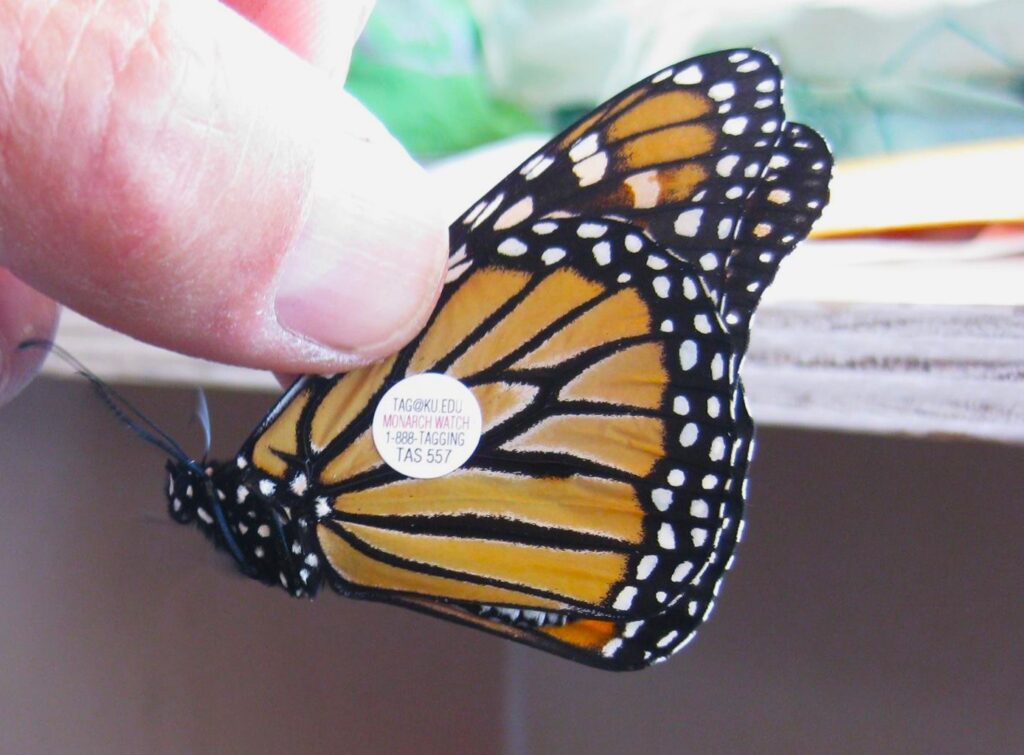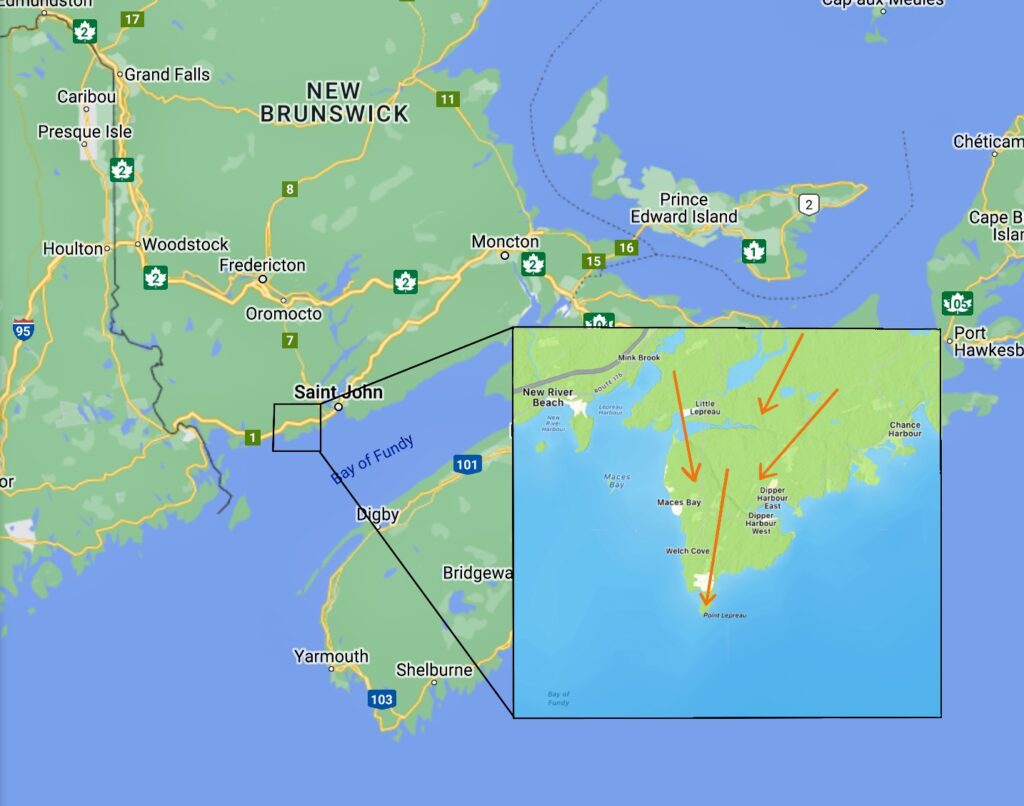Each fall, the fields and skies around Point Lepreau come alive with Monarch Butterflies as they begin their long journey south to Mexico. This remote coastal point, rich in blooming wildflowers, provides an important rest stop during their long journey.
Since 2006, volunteers with the Saint John Naturalists Club have helped track Monarchs by tagging them at the Point Lepreau Bird Observatory (PLBO). This work supports efforts to understand and protect this remarkable migratory species.

What is Monarch Tagging?
Tagging a Monarch involves catching it with a net, carefully handling it according to specific guidelines, placing a small numbered sticker on its wing, and releasing it back into the wild.
This simple method helps researchers connect the place where a butterfly was tagged with the location where it is later found. These records show the routes Monarchs follow, how weather affects migration, and how many survive the journey.
Our tagging data is shared with Monarch Watch, a research program based at the University of Kansas that focuses on Monarch conservation.

Why Point Lepreau?
The fields and coastline around the Point Lepreau Bird Observatory appear to be the most significant fall stopover site for Monarch Butterflies in New Brunswick.
Its position on the Bay of Fundy funnels southbound butterflies to the tip of the peninsula, where wildflowers bloom in late August and throughout September. These flowers provide the nectar Monarchs need for energy as they continue their migration.
At Point Lepreau, Monarchs stop to rest and feed before flying onward toward Mexico. Sightings of tagged Monarchs along their route help scientists map key migration corridors and identify habitat areas that need protection.
Get Involved
Each year from mid-August through September, volunteers help with Monarch tagging at PLBO. No prior experience is needed. All training and equipment are provided on site.
By joining a tagging session, you will learn about Monarch migration, assist with fieldwork, and play a part in international conservation efforts.
This work has also inspired presentations and events with NB Power staff, local schools, members of the Wolastoqiyik and Mi’kmaq First Nations, and the general public. Two Lieutenant Governors of New Brunswick have taken part in Monarch tagging activities through this project.
What You Need to Know About Visiting
Security Clearance Required
The access road to the Point Lepreau Bird Observatory passes through land owned and operated by NB Power’s nuclear generating station. Anyone visiting the site must receive security clearance in advance.
This involves a criminal record check by local police and may take several weeks to complete. Once approved, your clearance remains valid for future visits and seasons. We recommend starting the process early if you wish to participate.
Watch and Learn:
To learn more, you can watch the video below featuring Jim Wilson, who shares insights on the Monarch’s life cycle and explains how tagging helps protect the species.

This project would not be possible without the generous contributions from Nature NB. Learn more about the work they are doing for Monarch Butterflies here.
